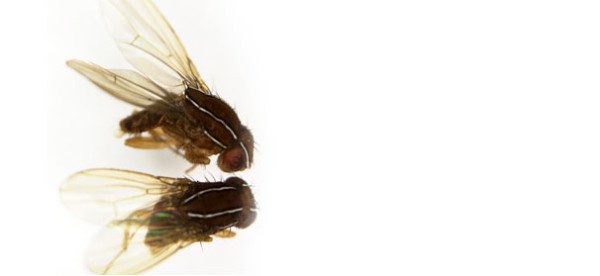

Dec 31, 2012New fruit fly spreading across country
A new fruit fly is showing up across the United States, and it may cause problems for growers, especially in small fruit. Similar in size, but not appearance, to Spotted Wing Drosophila (SWD), the African fig fly (AFF) lays its eggs in overripe and damaged fruit, said David Biddinger, a researcher with Penn State University’s Department of Entomology.
The main concern for AFF is mid- to late-season crops like raspberries, blackberries and grapes.
“In our experience, SWD does not appear to like grapes as a host all that well, but AFF numbers have been highest in grapes,” Biddinger said.
AFF was first found in the United States in Florida in 2005, where it has spread to several counties. It’s also been reported in Michigan, Texas, Arizona, California, Mississippi, Oklahoma, Louisiana, South Carolina, Virginia, Wisconsin and Connecticut, although not all state records were immediately verifiable, said Joel Floyd, a domestic diagnostics coordinator with USDA’s Animal and Plant Health Inspection Service.
Rufus Isaacs, an entomologist with Michigan State University, said AFF hasn’t caused problems in Michigan on the scale of SWD. So far, AFF has occurred only late in the season, and at very low levels compared with SWD. The biology of the fly also plays a role in his opinion.
“It has a weak egg-laying device, and therefore cannot make holes in intact fruit – but it may be able to use the holes made by SWD to get into fruit,” Isaacs said. “We are working to monitor its progress. The detection in Michigan is surprising, because this is a generally tropical species, but it does show the value of having a monitoring program in place for new invasive pests.”
AFF was recently discovered in Pennsylvania, Biddinger said, and he suspects it’s in Maryland, too, though that hasn’t been confirmed.
Biddinger said there is concern about AFF being a potential pest in blueberry as well, especially in Southern states.
AFF is native to Africa, the Middle East and Eurasia. The fly has also been found in Brazil, Uruguay and Panama, Floyd said.
Biology
The body of AFF is yellowish-brown, with distinctive white stripes that extend from the antennae to the tip of the thorax and from the thorax to the wing-base. It has white and black stripes on its head, and red eyes, Biddinger said.
It is a small insect, measuring an average of 3.5 millimeters for adults, meaning growers will need good hand lenses to determine what they have. It’s in the drosophilid family, and the larvae of all flies in that family are similar in appearance, so most people have a hard time identifying them, Biddinger said.
Sven-Erik Spichiger, entomology program manager with the Pennsylvania Department of Agriculture, said AFF seems to do well when it gets to a new area, outcompeting native species.
AFF can build up its initial population quickly, but it seems to be sensitive to cold, Biddinger said. His team has not found any flies after early frosts, when SWD is still peaking. Winter mortality of overwintering females might be high as well, he said.
Traps used for SWD have been successful at capturing AFF, but control measures are still being worked on, Biddinger said.
By Derrek Sigler, Assistant Editor














